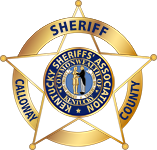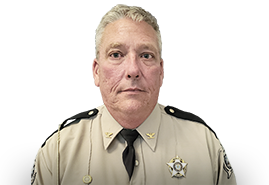History
Origin of the Sheriff’s OfficeThe first known sheriff’s office dates back to England more than 1200 years ago when small groups of rural communities formed a unit of government called “shires”, a word referring to groups of hundreds banded together. Shires are similar to counties in the United States today. The leader of shire was called the shire-reeve which later became known as the sheriff, the keeper, or chief, of the county. During this time the sheriff was responsible for maintaining law and order within his own county. Four hundred years later the sheriff became the agent of the King and not only was the chief law enforcement official but was also responsible for tax collection.
When English settlers came to the new world, the office of sheriff traveled with them. The first American counties were established in Virginia in 1634 and one of these counties elected a sheriff in 1651.
Throughout the eighteenth and nineteenth centuries American sheriffs were assigned a broad range of responsibilities by colonial and state legislature, such as. tax collection and law enforcement. New responsibilities were added later such as overseeing the jails and workhouses. As America began to move westward, they took the concept of county jails and the office of sheriff with them. The sheriff was desperately needed to establish order in the lawless territories where power belonged to those with the fastest draw and the most accurate shot. During these times it is said that the sheriff fell into two categories, the quick and the dead.
The Sheriff Today
There are over three thousand counties in the United States today and almost every one of them has a sheriff. In the majority of the states, the office of sheriff is established by the constitution or act of state legislature. In all but two states, Rhode Island and Hawaii, the sheriff is elected by the voters. Duties of most sheriffs’ offices include the following:
Law Enforcement - Most sheriffs’ offices have a responsibility for law enforcement. Although the authority of the sheriff varies from state to state, the sheriff has the power to make arrests anywhere within his or her own county. Some states extend this authority to adjacent counties or the entire state. Many sheriffs’ offices perform routine patrol functions such as traffic control, accident investigations, transport of prisoners, criminal investigations, and other specialized activities.
Court Duties - Sheriffs are responsible for maintaining the safety and security of the court, taking charge of juries when outside of the courtroom, service of court papers such as subpoenas, summons, warrants and civil process, and prisoner extradition.
Tax Collection - The sheriff is also responsible for collection of county property taxes. This is the same function that they served under the Kings in England.
Jail Administration - In all states but the four Commonwealths - Kentucky, Virginia, Pennsylvania, and Massachusetts the sheriff is responsible for the operation of the county jail. In Kentucky the county jailer is the elected administrator of the jail not the sheriff.
The Kentucky Sheriff
In the Southeastern part of the United States, where the county system is strong, the office of sheriff is more important than in those areas where local government is centered in towns or townships. The present Kentucky Constitution requires the election of a sheriff in each county. The term is for four years (Art. VI, section 99). Before taking office the sheriff must execute bond as provided in KRS 70.020, 134230 and 134.250. The bond required by KRS70.020 relates to the performance of the tax collection duties. The sheriff must also take the constitutional oath of office (KY. Const.,sec.228) and statutory oath of office.
Qualifications
1. Twenty-four years of age
2. A citizen of the Commonwealth of Kentucky
3. A resident of the Commonwealth for two years
4. A resident of the county in which he or she is elected one year prior of election.
Calloway County Sheriffs
The names of all Calloway County sheriffs and their dates of service are listed below. This information was obtained from voting records located in the county court clerk’s office. However, some of the records regarding the dates of the terms of offices were destroyed by fire when the courthouse burned sometime between 1910 and 1911. The names of the former sheriffs and available years of service are as follows:
**NOTE: Some Sheriff's years are not on record because the courthouse burned sometime between 1910-1911**
- W. B. Duncan – 1823
- Isaiah Kirby
- N. D. Gore
- Arthur H. Davis
- Andrew Bell
- J. Hodges
- N. Copeland
- John A. Martin
- B. Wells
- George Tucker
- William Jones
- John Copeland
- Reuben H. Rowland
- Samuel Watson
- William Craddock
- Asaph Jetton
- George P. Linn – 1851
- C. A. Duncan – was replaced at bayonet point by Union soldiers by Nat Ryan, Sr.
- Nat Ryan, Sr. – 1863
- Richard Nuckollus
- H. P. Utterback
- R. F. Mix
- N. C. Ryan
- J. H. Swift
- William Ryan
- Isaac Keys
- J. W. Fergeson
- L. C. Linn
- W. S. Bourland
- W. B. Keys
- R. B. Holland –
- S. H. Dees –
- C. H. Stewart – 1886-1889
- J. M. Radford – 1890-1893
- J. B. Hay – 1894-1897
- J. M. Radford – 1898-1901
- L. W. Holland – 1902-1905
- J. A. Edwards – 1906-1909
- C. L. Jordan – 1910-1913
- W. A. Patterson – 1914-1917
- J. D. Houston – 1918 – 1921
- Frank Pool – 1922-1925
- J. Robertson – 1926-1929
- C. W. Drinkard – 1930-1933
- Carl Kingins – 1934-1937
- Ira Fox – 1938-1941
- Carl Kingins – 1942-1945
- W. B. Patterson – 1946-1949
- Wayne Flora – 1950-1953
- Bringham Futrell – 1954-1957
- Cohen Stubblefield – 1958-1961
- Woodrow Rickman – 1962-1965
- Cohen Stubblefield – 1966-1969
- Clyde Steele – 1970-1973
- Maurice Wilson – 1974-1977
- Max Morris – 1978-1981
- David M. Ballentine – 1982-1985
- J. D. Williams 1986-1993
- Stan Scott – 1994-2003
- Larry Roberts – 2003-2006
- Wm. “Bill” Marcum – 2007- 2014
- Sam Steger – 2015-2020
- Nicky Knight – - Present

